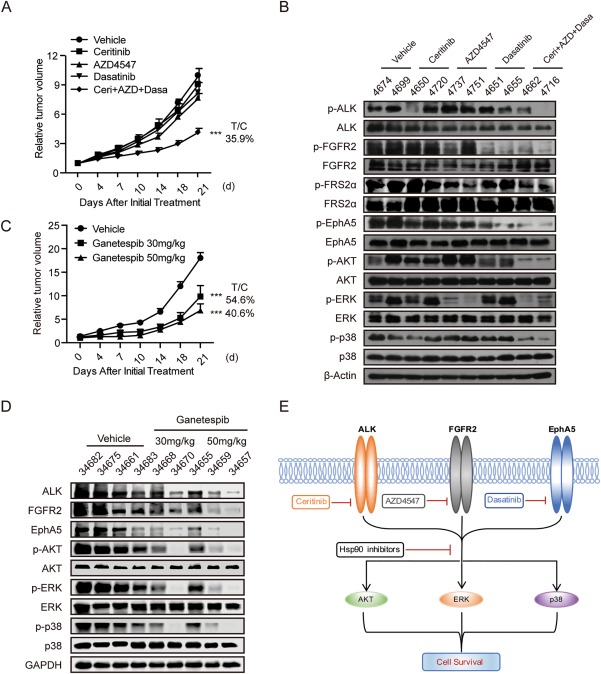Figure 6.

Abrogating ALK, FGFR2, and EphA5 activity leads to HCC patient–derived xenograft growth suppression. (A) Mice bearing HCC patient–derived xenograft model LI0752 were treated with vehicle or ceritinib (25 mg/kg), AZD4547 (12.5 mg/kg), or dasatinib (25 mg/kg) individually or in combination once a day for a consecutive 3 weeks. Tumor volume was measured twice a week. Bars represent means ± SEM, n = 6. (B) Tumor lysates were prepared and subjected to immunoblotting analysis with indicated antibodies. (C) Mice bearing HCC patient–derived xenograft model LI0752 were treated with vehicle or ganetespib (30 mg/kg or 50 mg/kg, three times per week). Tumor volume was measured twice a week. Bars represent means ± SEM, n = 6. (D) Tumor lysates were prepared and subjected to immunoblotting analysis with indicated antibodies. (E) A proposed overview of ALK, FGFR2 and EphA5 co‐activation in HCC cells and therapeutic strategies to block their activities were illustrated. Abbreviations: FRS2, FGFR substrate 2; GAPDH, glyceraldehyde 3‐phosphate dehydrogenase; T/C, treatment/control.
